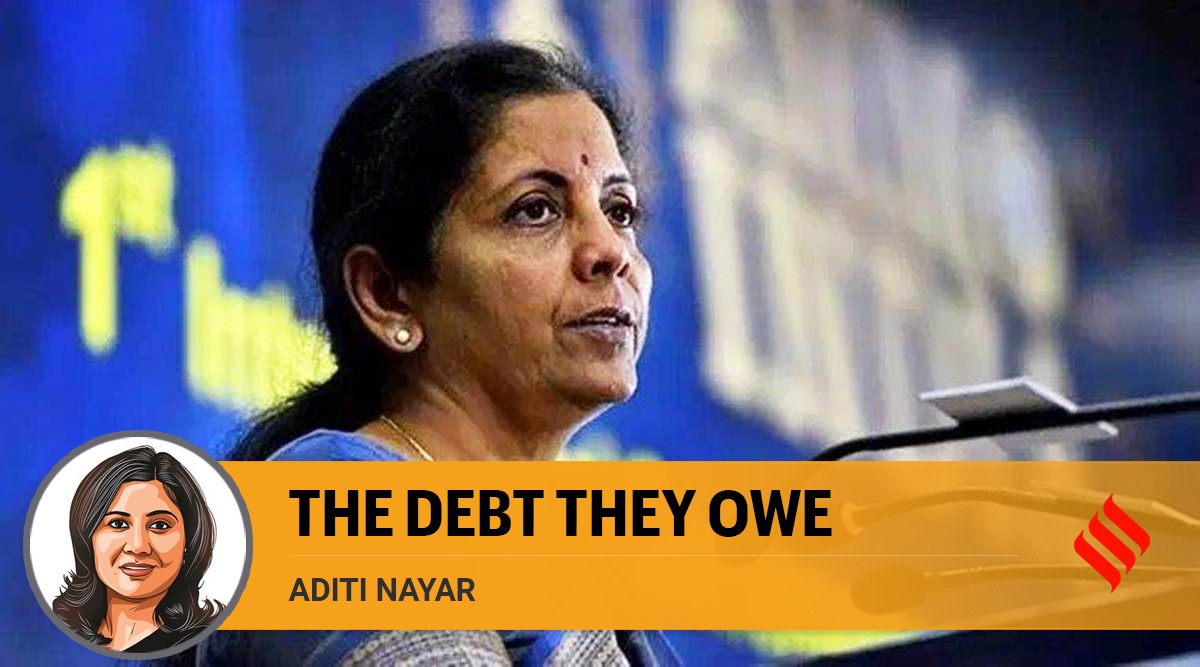 Finance Minister Nirmala Sitharaman (File photo)
Finance Minister Nirmala Sitharaman (File photo)At the beginning of every year, the Union government communicates to state governments how much they are allowed to borrow (their net borrowing ceiling). Normally, this is a routine affair. But this year there have been some changes. Most critically, states’ off-budget borrowings, routed through state-owned entities, are now being equated with the state governments’ own debt. This will shed light on a segment of state debt that has escaped the Centre’s oversight in the past. Considering the proliferation of off-budget borrowings since the pandemic started, some state governments are likely to find this new missive challenging to comply with.
Under Article 293 (3) of the Constitution, state governments are required to take the Centre’s permission for fresh borrowing, if they are indebted to the Government of India. A fiscal deficit target is typically recommended by the Government of India-appointed finance commission for a five-year period and accepted or modified by the Centre. The base fiscal deficit is usually defined in terms of a percentage rate, which is uniformly applicable to all state governments. This is then applied to the Centre’s estimate of each state’s gross state domestic product (GSDP) for a particular fiscal year to determine the absolute net borrowing ceiling for that year. The borrowing ceiling set in this manner acts as a soft constraint to that year’s state-wise fiscal deficit.
This ceiling is typically communicated to the states at the start of each financial year. For 2022-23, the ceiling has been set at 3.5 per cent of GSDP, and an additional 0.5 per cent of borrowings has been allowed, linked, conditionally, to each state’s achievement on power sector reforms, taking total borrowings up to 4 per cent of GSDP this year. A caveat is in order. Loans to be provided by the Centre to the states under the special assistance to states for capital investment scheme of Rs 1 lakh crore will be above this limit.
This year, the communication from the Centre has clarified that off-budget borrowings are to be equated with the states’ own debt. Moreover, incremental off-budget borrowings that state governments have undertaken in the last two years (2020-21 and 2021-22) will need to be adjusted out of the borrowing ceiling this year. This equating of off-budget borrowings with the state’s own debt is a watershed decision for state finances. Undoubtedly, this is a welcome move as it will bring in much-needed fiscal transparency in an area that has been cloaked in opacity.
Best of Express Premium
So what are these off-budget borrowings? Off-budget borrowings by a state government refer to loans taken by its entities, special purpose vehicles, etc., which are expected to eventually be serviced through the state government’s own budget, instead of the cash flows or revenues generated by the borrowing entity. Anecdotal evidence suggests that such loans have proliferated in some states in recent years. However, hard data on such loans is exceedingly difficult to excavate and consolidate to arrive at a comprehensive understanding of its magnitude. Given the lack of data, we are unable to ascertain the state-wise extent of incremental off-budget borrowings that will be adjusted this year. Regardless, this poses a downside to our estimate of gross state development loans (SDL) issuances of Rs 8.4 lakh crore this year.
The monthly summary of the Department of Expenditure for March maintains that by raising these borrowings off-budget, states are effectively circumventing the ceiling set by the Centre. Thus, such borrowings aid states in surpassing the targets for various fiscal indicators that were set under state Fiscal Responsibility and Budget Management Acts, which have been passed by various state legislatures. Then there is also the matter of the ability of state governments to service this debt in the future to contend with. These interest obligations and the repayment of the principal could widen states’ deficits significantly and compress the fiscal space available for other expenditure priorities.
This change in approach towards such borrowings is likely to have come as an unpleasant surprise for some states, especially those that went on an off-budget borrowing spree in the last two years. How they can fund their expenditures this year, with a compressed borrowing space, remains to be seen. We suspect that the usage of liquidity facilities provided by the RBI such as the ways and means advances and overdraft by some states is going to spike this year.
This column first appeared in the print edition on May 11, 2022 under the title ‘The debt they owe’. The writer is Chief Economist, ICRA
- The Indian Express website has been rated GREEN for its credibility and trustworthiness by Newsguard, a global service that rates news sources for their journalistic standards.

